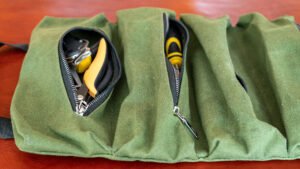
I learned a number of things while sailing aboard Challenge Accepted in the 2022 Newport-Bermuda Race. Among those things was the creative use of household wall-mounted flexible shoe racks to store various and sundry tool items, and how a cloth tool roll with zippered compartments makes the best possible tool storage solution.
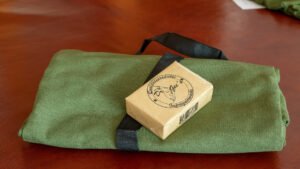
I’m away from the boat right now so can’t put up the shoe rack, but I did order two cloth tool rolls online and one will be used here while the other will go aboard Zanshin.
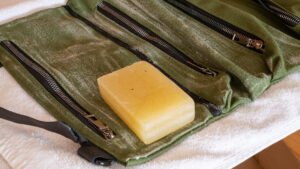
I couldn’t just leave well enough alone with the roll, though. I decided to waterproof or weatherproof the canvas material, hoping to stave off rust formation aboard and make the tool roll more durable in the process. Waxing canvas has been used for centuries and the wax is generally a mix of beeswax and paraffin and sometimes contains other hardening oils such as Tung oil or linseed oil. I thought about mixing my own concoction together but after visualizing the mess in my kitchen I opted to get a bar of waterproofing wax made by Dr. Gee in Germany.
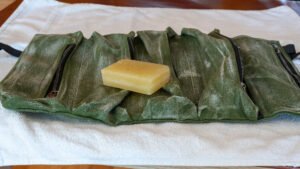
Application is quite simple: put the object on a flat surface and rub the bar firmly across all surface to get a layer of wax on top of the canvas. Then use an iron or a hair dryer to melt the wax coating into the fabric. Repeat until the desired level of waterproofing is reached.

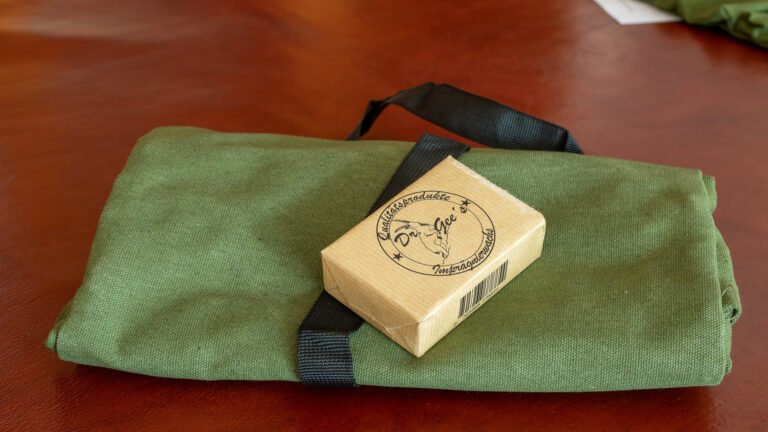

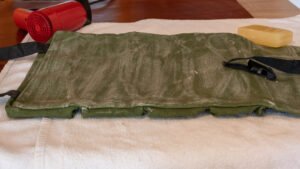
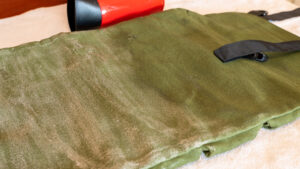
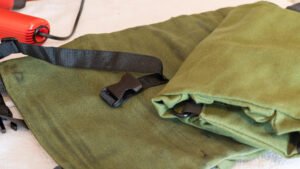
2 thoughts on “Cloth tool roll”
Messy process! I used to suffer the same procedure for my Barbour wax jackets until I stumbled upon NikWax spray – much easier 😉
Hello John! While I agree that the spray-on synthetic waterproofing is less messy an delivers superior results, I like the old-school method as well to give the canvas some rigidity in addition to becoming waterproof. I did the second green tool-rool using melted wax, a paintbrush and then putting the resulting messy concoction into the oven at low heat. That worked really well, better than the original method.
Now I ordered some components online and will be doing both another waterproofing entry (backpack, shopping bags, kitchen bags, etc.) and a leather conditioning solution entry in the near future. Since I’ve got to warm up waxes and linseed oil, tung oil, turpentine, carnauba wax, walnut oil and other items it is really going to make a mess!!!
Comments are closed.